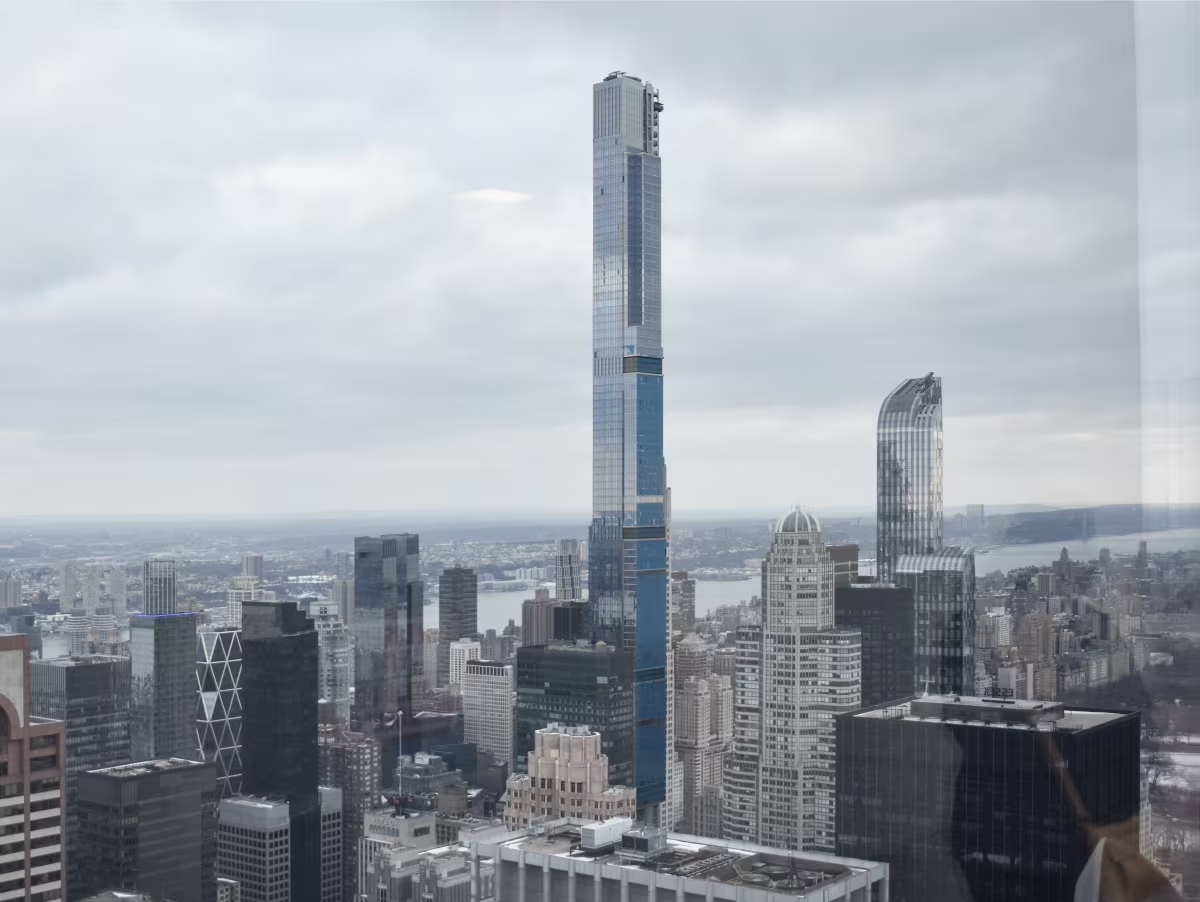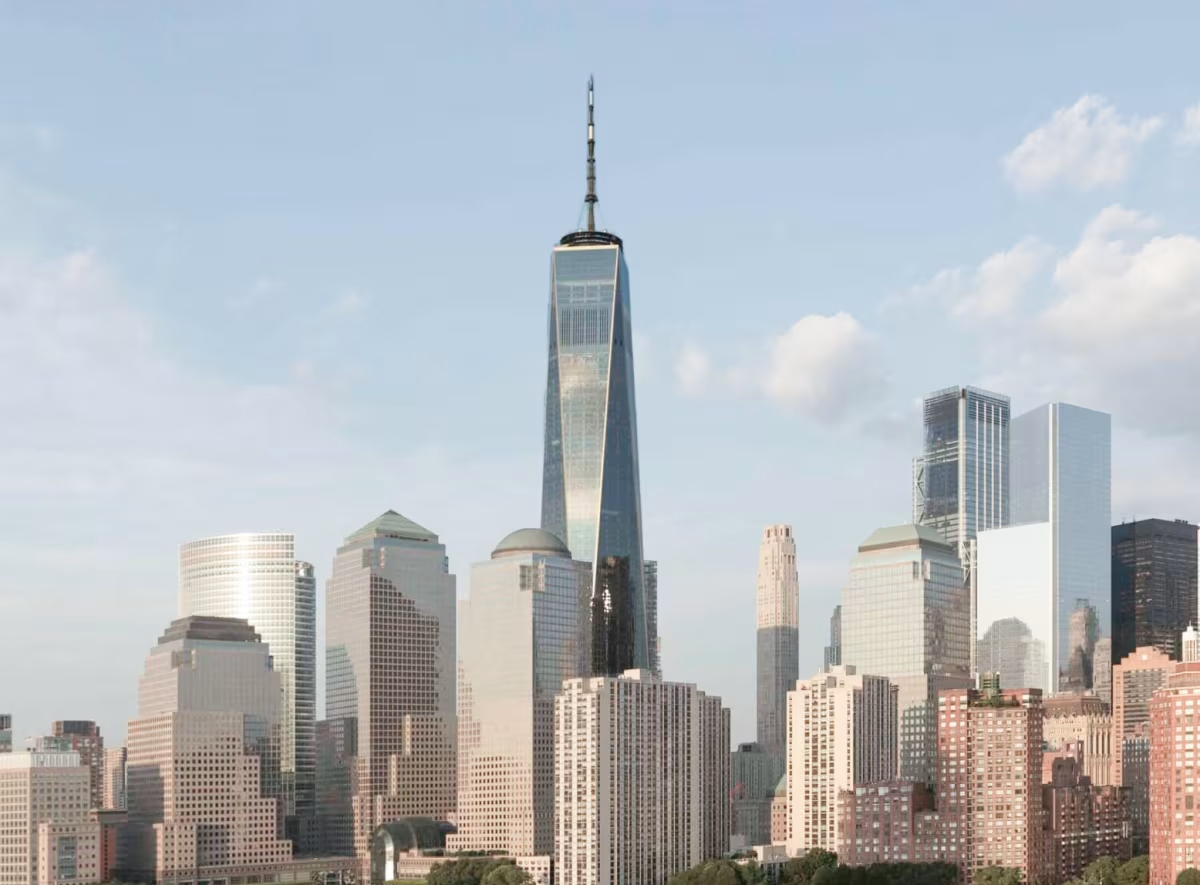Central Park Tower vs One World Trade Center


Comparing the Central Park Tower and the One World Trade Center is interesting because they both rise in New York, NY, yet they were conceived by two different design teams, Adrian Smith + Gordon Gill Architecture and Skidmore, Owings & Merrill, and were completed at different points in time. They were finished more than 6 years apart.
This contrast within the same city allows us to see how different creative minds interpreted the evolving needs of New York across time.
Let's take a closer look!
Height & Size
The One World Trade Center is clearly the larger tower of the two, both in terms of height and number of floors. It rises to 1775ft (541m) with 104 floors above ground, while the Central Park Tower reaches 1549ft (472m) with 98 floors above ground.
One World Trade Center also offers more total built-up area, a total fo 3,500,000 sqf (325,161m2), which is about 2,214,694 sqf (205,752m2) more than what the Central Park Tower offers.
Of course, each project may have faced different briefs or regulatory constraints, which we don't really know about and could also explain the outcome.
Architectural Style
Both the Central Park Tower and the One World Trade Center were designed in line with the aesthetic conventions of the Contemporary style.
At the time, this style was at the height of its popularity. So both Adrian Smith + Gordon Gill Architecture and Skidmore, Owings & Merrill followed what was in many ways expected of them, producing designs that fit comfortably within contemporary architectural norms, rather than breaking with convention.
Uses
The Central Park Tower is primarily residential, while the One World Trade Center is primarily commercial.
The Central Park Tower offers 179 residential units.
Structure & Facade
The two towers rely on different structural systems, reflecting distinct engineering strategies.
The Central Park Tower uses a Frame structural system, which relies on a regular grid of columns and beams to sustain its weight, while the One World Trade Center uses a Framed Tube In Tube system, that combines a strong central core with a perimeter tube of columns.
Yet, when it comes to their facade, they both employed the same solution, a Curtain Wall facade.
A curtain wall is a non-load-bearing facade hung from the structural frame. It is anchored to floor slabs and transfers only its own weight and wind loads, allowing for sleek, glassy exteriors.
| Central Park Tower | One World Trade Center | |
|---|---|---|
| Adrian Smith + Gordon Gill Architecture | Architect | Skidmore, Owings & Merrill |
| 2010 | Design Started | 2005 |
| 2014 | Design Ended | 2007 |
| 2014 | Construction Started | 2006 |
| 2020 | Year Completed | 2014 |
| Contemporary | Architectural Style | Contemporary |
| Residential | Current Use | Commercial |
| 98 | Floors Above Ground | 104 |
| 4 | Floors Below Ground | 5 |
| 432 | Last Floor Height | 386 |
| 472 m | Height (m) | 541 m |
| 119409 | Built-up Area (m²) | 325161 |
| 11 | Number of Elevators | 73 |
| Frame | Structure Type | Framed Tube In Tube |
| Reinforced Concrete | Vertical Structure Material | Steel |
| Poured Concrete Over Metal Decking | Horizontal Structure Material | Poured Concrete Over Metal Decking |
| No | Facade Structural? | No |
| Aluminum, Glass | Main Facade Material | Glass, Steel |
| Lendlease | Main Contractor | Tishman Construction |
| Extell Development Company | Developer | Port Authority Of New York And New Jersey |
| Otis Elevator Company | Elevator Company | Thyssenkrupp |
| AKF Group | MEP Engineer | Jaros Baum & Bolles |
| WSP | Structural Engineer | WSP Group |
| James Carpenter Design Associates And Permasteelisa Group | Facade Consultant | Isreal Berger And Associates |
| NY | State | NY |
| New York | City | New York |
| 225 West 57th Street | Address | 285 Fulton Street |